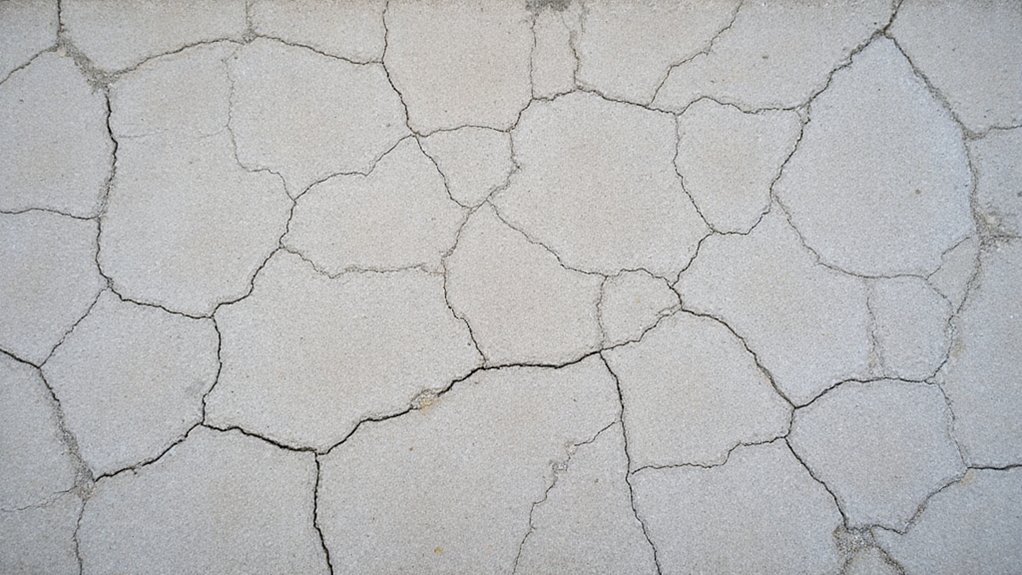Cracks in your home’s foundation can be concerning, but understanding the different types can help you address the issue effectively. Horizontal cracks parallel to the wall often signal serious settlement or drainage problems, while vertical cracks may indicate potential settling concerns. Stair-step cracks along mortar joints typically point to uneven foundation settling. Evaluating the size, location, and pattern of these cracks is vital to determine the underlying cause and the appropriate course of action. Knowing the signs can be the first step in resolving your foundation issues.
Common Causes of Foundation Cracks
Although foundation cracks can be alarming, it’s important to understand their common causes. One of the primary culprits is soil expansion, which can occur when the soil around your foundation absorbs moisture and expands, putting pressure on the concrete. Improper drainage can also contribute to foundation cracks, as excess water accumulating around the foundation can cause it to shift and settle unevenly. These issues are often exacerbated by environmental factors like drought, heavy rain, or freezing temperatures. Foundation repair work can be complex, as no two basement problems are alike.
Horizontal Foundation Cracks
Horizontal foundation cracks often indicate a more serious structural issue compared to their vertical counterparts. These cracks typically run parallel to the foundation wall and can be a sign of settling soil or poor drainage around the home. Cracking can undermine structural integrity and lead to water leaks, which should be addressed promptly.
Vertical Foundation Cracks
Vertical foundation cracks, while not as worrying as their horizontal counterparts, still demand attention. These cracks typically appear as straight lines running up and down the wall, and they may indicate potential settlement issues or structural integrity concerns.
While not as severe as horizontal cracks, which can compromise the foundation’s stability, vertical cracks should still be evaluated by a professional. By addressing vertical cracks promptly, you can minimize the risk of future problems and safeguard the long-term health of your home’s foundation. Staying vigilant and addressing these cracks early on can provide peace of mind and protect your investment.
Stair-Step Foundation Cracks
Another type of foundation crack you may encounter is the stair-step crack. This type of crack often indicates uneven settling in the foundation, which can signal structural integrity issues.
The cracks appear in a jagged, step-like pattern, typically along the mortar joints between bricks or concrete blocks. This type of crack is particularly concerning as it suggests differential movement in the foundation, which can lead to further damage if not addressed promptly.
If you notice these types of cracks, it’s essential to have a professional evaluate your foundation and determine the appropriate course of action.
Identifying the Severity of Foundation Cracks
When examining the severity of foundation cracks, it’s important to evaluate factors like the size, location, and pattern of the cracks. Wider cracks and those that extend deeper into the foundation indicate more significant issues.
Additionally, the crack’s location – whether it’s near corners, windows, or load-bearing walls – can help assess its impact. Settlement pattern analysis, which looks at the crack’s direction and relationship to the home’s structure, is vital for determining the underlying cause.
A thorough crack depth assessment, combined with an understanding of the home’s settlement, allows for an accurate evaluation of the severity and required repairs.
Strategies for Repairing Foundation Cracks
If you’re dealing with foundation cracks, don’t worry – there are effective strategies available to address the issue.
For minor cracks, you can try DIY repair methods like epoxy injections or sealants. These are relatively affordable and can be done yourself with the right tools and techniques.
However, for more severe cracks, it’s best to contact professional repair services. They’ve the proficiency and equipment to properly assess the extent of the damage and implement the appropriate solution, such as mudjacking or pier installation.
With the right approach, you can restore the structural integrity of your home.
Preventing Future Foundation Cracks
Preventing future foundation cracks starts with understanding the root causes. Proper soil grading around your home is pivotal, ensuring water flows away from the foundation.
Effective waterproofing, both inside and out, shields your home from moisture intrusion. Regular inspections can catch small issues before they become major problems. Simple fixes like sealing cracks and repairing drainage systems can go a long way.
Addressing the underlying causes, not just the symptoms, will give you peace of mind and protect your home’s foundation for years to come. Investing in prevention now can save you costly repairs down the line.
Frequently Asked Questions
Can Foundation Cracks Cause Structural Damage?
Yes, foundation cracks can cause structural damage. The extent of damage depends on the stability concerns, so it’s vital to address them promptly to prevent further issues and ascertain your home’s structural integrity.
How Do I Know if a Crack Is an Emergency?
If the crack’s location is in a critical area and its size is larger than a pencil width, it’s an emergency. Don’t wait – call a professional to assess the damage right away.
What Are the Long-Term Effects of Foundation Cracks?
Unaddressed foundation cracks can severely weaken your home’s structural integrity, increasing the risk of water damage and costly repairs down the line. Don’t ignore these issues – they won’t fix themselves.
Can Foundation Cracks Be Repaired DIY?
You can try simple DIY techniques to temporarily patch foundation cracks, but for lasting repairs, professional reinforcement is usually required. Foundation issues need expert attention to guarantee your home’s structural integrity and safeguard your investment.
How Can I Prevent Foundation Cracks in the Future?
To prevent future foundation cracks, guarantee proper drainage installation and perform yearly inspections. Identify and address issues early before they become major problems, so your home remains a secure and comfortable place you can enjoy.


Recent Comments